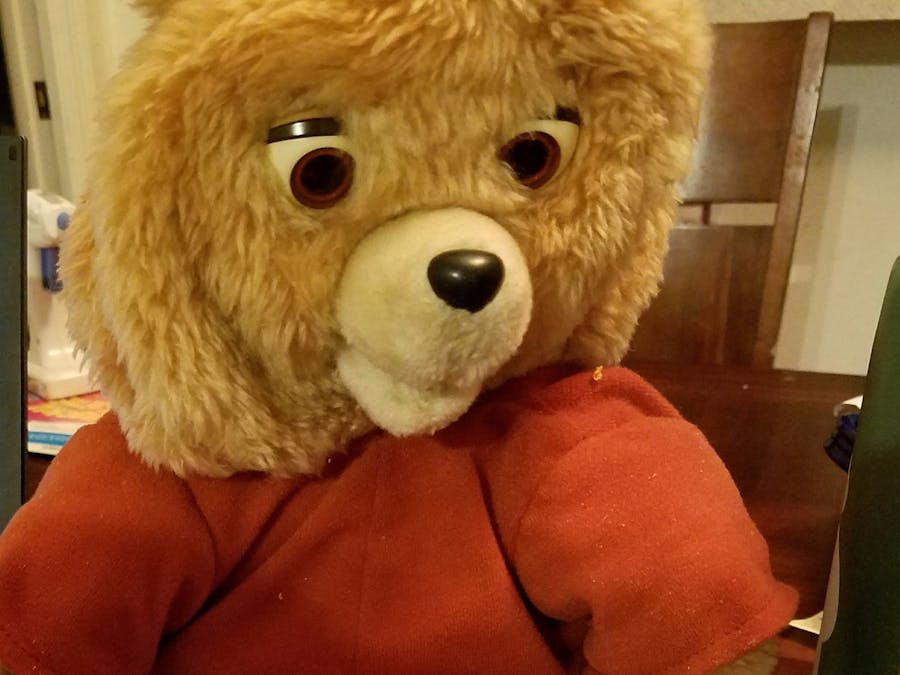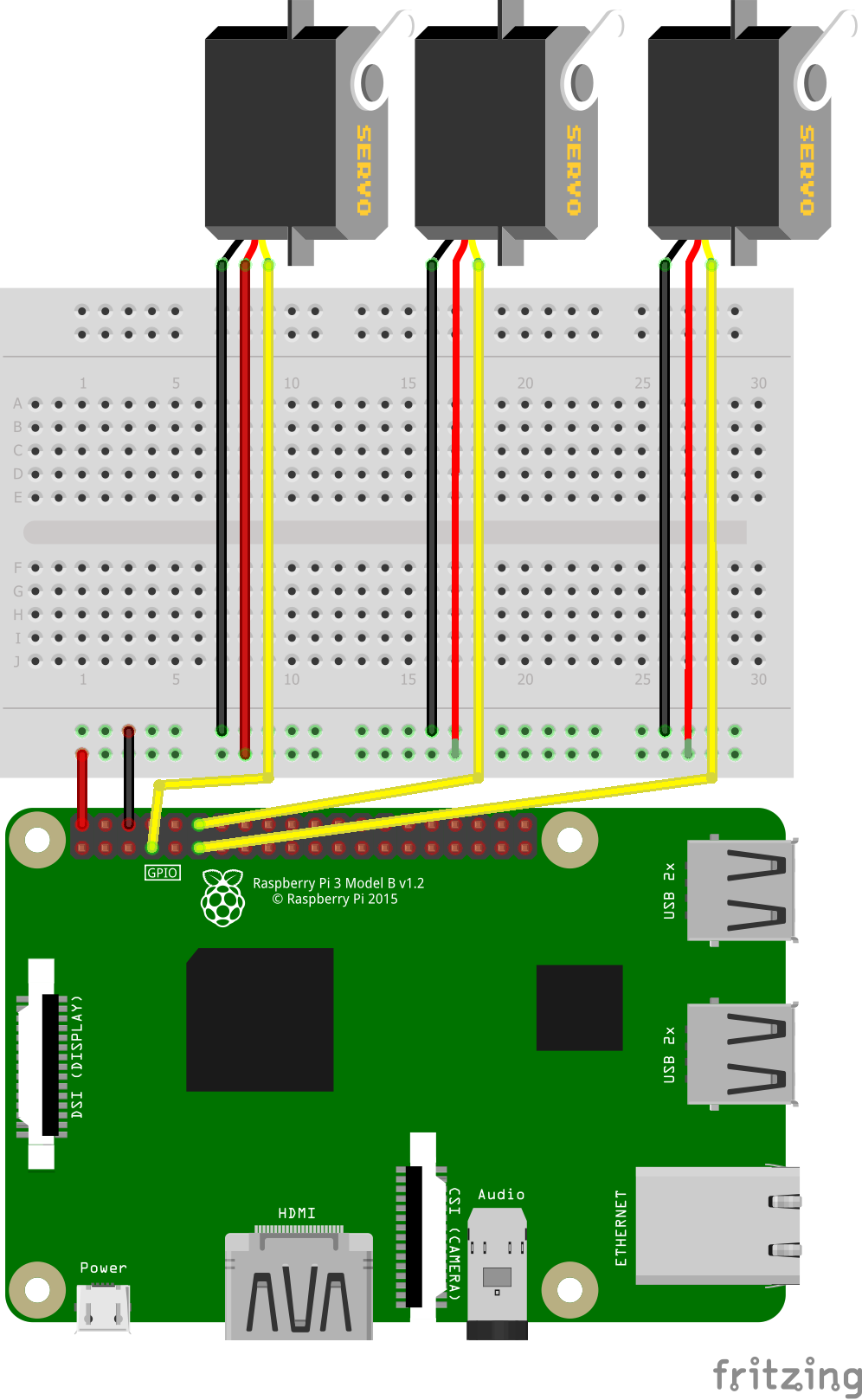My wife had a Teddy Ruxpin as a kid until it took a nose dive off of the top bunk of a bed. Shortly after, I ran across a hackaday reference to Tinkernut's Teddy Ruxpin. She almost immediately order a pair of 'not functioning' Teddy Ruxpins off of ebay. One was a World of Wonder (Version 1 metal tape deck), and another was a later YES! Entertainment version. An audio cassette was included.
Replace ServosI followed the Tinkernut video for how to replace the servos. I used some Tower Pro SG90 servos. Ensure you save all the gears, as some of them need to be re-used. It might be nice to 3d-print replacement servo enclosures, but the hot glue is still doing it's job.
Raspberry PiInstead of using an Arduino to generate the PWM signals to the servos, I used ServoBlaster on a Raspberry Pi. I know there are PiHats that generate better hardware PWM signals, but doing it in software on a Pi 3 is sufficient here. Be sure to pay attention to the ServoBlaster's output. Ensure you get the pin numbers and the GPIO numbers straight.
JoystickI hooked up a USB to Playstation 1-2 controller adapter, and an old Playstation controller. I wrote a perl script to read the joystick inputs, and map them to joystick outputs. Since the joystick has two analog X/Y sticks, I mapped one to the eyes, and the other to the mouth. The mouth is made up of two servos, so I just send the same value to both.
Proto ShieldI soldered up a proto shield so I could have header pins that the servo plugs can simply plug into. There may be times I want to steal my Raspberry Pi back from the stuffed animal.
RoadmapMy ultimate end goal, is to have it operate as a bluetooth speaker, so it can play any audio. Unfortunately, the sound quality coming out of the raspberry pi isn't very high. I'll either go with a USB or I2C solution. It would also be nice to convert the audio cassette into MP3, play the audio from one track, and decode the data from the other. For now, it's good enough to show this off at Maker Faire Orlando 2017.












Comments
Please log in or sign up to comment.